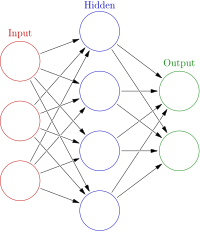
Photo from wikipedia
Edge detection is one of the most fundamental operations in the field of image analysis and computer vision as a critical preprocessing step for high-level tasks. It is difficult to… Click to show full abstract
Edge detection is one of the most fundamental operations in the field of image analysis and computer vision as a critical preprocessing step for high-level tasks. It is difficult to give a generic threshold that works well on all images as the image contents are totally different. This paper presents an adaptive, robust and effective edge detector for real-time applications. According to the 2D entropy, the images can be clarified into three groups, each attached with a reference percentage value based on the edge proportion statistics. Compared with the attached points along the gradient direction, anchor points were extracted with high probability to be edge pixels. Taking the segment direction into account, these points were then jointed into different edge segments, each of which was a clean, contiguous, 1-pixel wide chain of pixels. Experimental results indicate that the proposed edge detector outperforms the traditional edge following methods in terms of detection accuracy. Besides, the detection results can be used as the input information for post-processing applications in real-time.
Journal Title: IEEE Transactions on Image Processing
Year Published: 2020
Link to full text (if available)
Share on Social Media: Sign Up to like & get
recommendations!